The Alevis, Turkey’s largest religious minority, have been persecuted for centuries. Will the fallout from the war in Syria only make things worse?
ISTANBUL, Turkey—
In many ways, it resembles a traditional mosque. The worshippers slip off their shoes and tread slowly over rows of intricate, hand-woven rugs. Everyone is dressed demurely and the women tie scarves over their hair. Before the prayers begin, they sit cross-legged on the floor. Above them is a domed ceiling, in the center of which dangles a large chandelier.
But look closer and there are some key differences. The dome has 12 edges, Under each is a portrait of a different turbaned man. All of them have thick beards and piercing eyes, their faces shadowed by a saintly penumbra. These are the 12 imams revered by Shiites—Imam Ali, his son, Imam Husayn, and the 10 who came after them. All but the last of them were killed.
The timing is different from a traditional mosque as well. It is Thursday evening, the time of the week when many Sufis across the Muslim divide gather for spiritual remembrance, rather than Friday afternoon, when most Muslims meet once a week for prayer. There is no pulpit. There isn’t even a niche in the direction of Mecca. Instead, the worshippers sit in a circle of about 50 men and at least twice as many women. They sit near each other, the women as prominently placed as the men.

The Alevis are Turkey’s largest religious minority. There are no exact figures for the total population, but estimates range from 7 to 15 million, depending on whom you ask. They live mostly in Turkey but small communities are also scattered in nearby countries. The Alevis have faced ill treatment over the centuries, from the Ottomans to the nationalists in the early days of the Turkish republic. Now, they fear that President Recep Tayyip Erdogan’s government is marginalizing them as it promotes a distinctly Sunni form of majoritarianism, and the fallout from the war in Syria slowly presses into their lives.
Alevis follow an ascetic offshoot of Shiism that also incorporates aspects of the mystical branch of Islam known as Sufism. For the Alevis, there is no single “qibla”—the direction Muslims traditionally face to offer prayers to God. “We have no one direction,” says Veli Gulsoy, the head of the congregation at the Haci Bektas cemevi, or “hall of worship,” in Istanbul’s Gazi neighborhood. “For us, Allah is everywhere. He is very near. He is in our hearts.” Gulsoy is affectionately known by his flock as dede, which means grandfather. Men and women kiss his hand out of respect when they meet him, and never turn their backs toward him.

We are not frightened of Allah
Gulsoy is a distinguished man in his 50s. He dresses plainly, in a charcoal suit and black shirt. Unlike Sunni and Shiite imams, he wears no elaborate headgear, beard, or flowing robes. Instead, he has neatly trimmed mustache, wooden framed glasses, and speaks in slow, deliberate tones. Unlike other Muslims, he explains, “We are not frightened of Allah. We just love. We just pray, and do so without seeking heaven or fearing hell.”
On the cemevi’s top floor is the prayer hall. The floors below host a conference center, a library, and an education center where teachers, in return for a modest fee, offer supplementary lessons in English, the piano, science, chess, and other pursuits. The Haci Bektas cemevi, which has a large portrait of its namesake, a 13th-century mystic revered by Alevis, on the outside of its building, is the largest of its kind in Istanbul.
The cemevi is located in the heart of Istanbul’s hardscrabble, working-class Gazi neighborhood. Most of the areas residents are Alevis or Kurds, another beleaguered minority in Turkey, and there’s a recent influx of new arrivals from among the large Syrian refugee population. To add to the mix, Gazi is home to a number of militant left-wing groups who routinely clash with the local police.

The cem, or gathering, doesn’t begin with the call to prayer, but the gentle strumming of the balagma, a traditional guitar-like instrument with a thick, holeless base. It is played by the ashik, or lover, who sings hymns of devotion as the worshippers take their places in a circle in front of him. As he eases into a song, some walk over to a 12-sided star marked in the center of the floor, bow down, and kiss it. “It is a way of saying, ‘I’m nothing when it comes to the world,’” says Duygu Budak, an Alevi archaeologist and my guide to the proceedings.
Humility and self-effacement are key themes in the Alevi faith, which emphasizes inner spirituality over public acts of worship. In between songs, the dede offers homilies. “If a person carries dislike in their heart their prayers will not be accepted by God,” Gülsoy intones, but without a hint of admonition. Later, he makes sharper distinctions between physical and spiritual acts. “If you pray on soil, but have no soul, your prayer is empty,” he says. “You cannot rely on your eyes to look. You have to see with your heart. With your heart, you can see everything. Don’t look. See.”
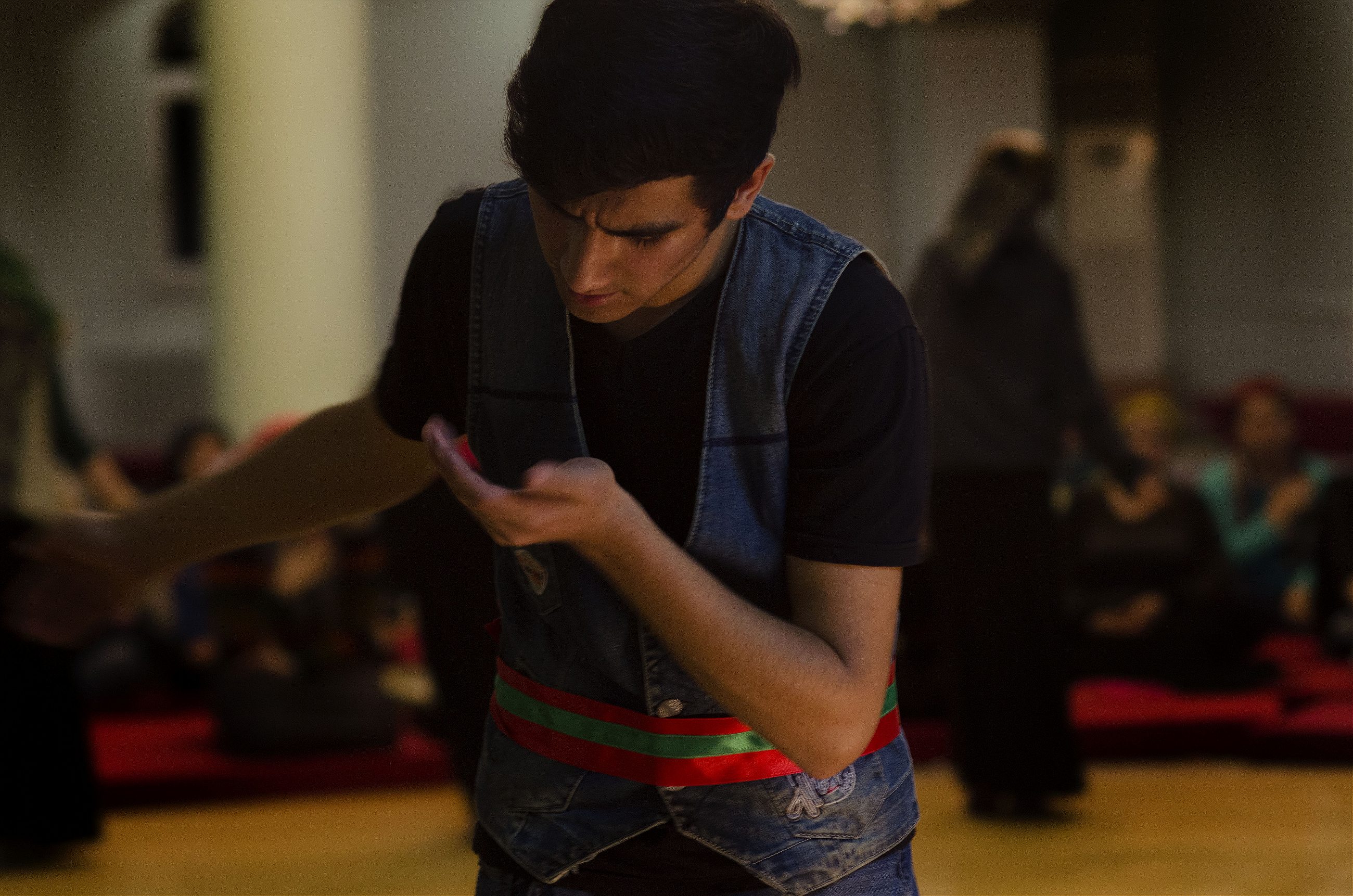
The dede’s words are interspersed with aphorisms from Sufi greats like Jalaluddin Rumi, the revered 13th century poet, and the sayings of Imam Ali, Prophet Muhammad’s companion, cousin, and son-in-law. And as far as Alevis and others Shia-influenced groups are concerned, Ali is Muhammad’s true heir. Sunnis believe that Abu Bakr, Mohammed’s father-in-law, was his rightful successor.
Ali’s famous forked sword, Zulfikar, is a prominent emblem across the cemevi. The worshippers invoke him in a chant: “Allah, Muhammad, Ya Ali!” It’s their own version of the trinity, but not one of equal parts. They light three candles to represent each, but also to symbolize the lights of the sun, the moon, and the stars.
The charge of heresy has long been leveled at the Alevis
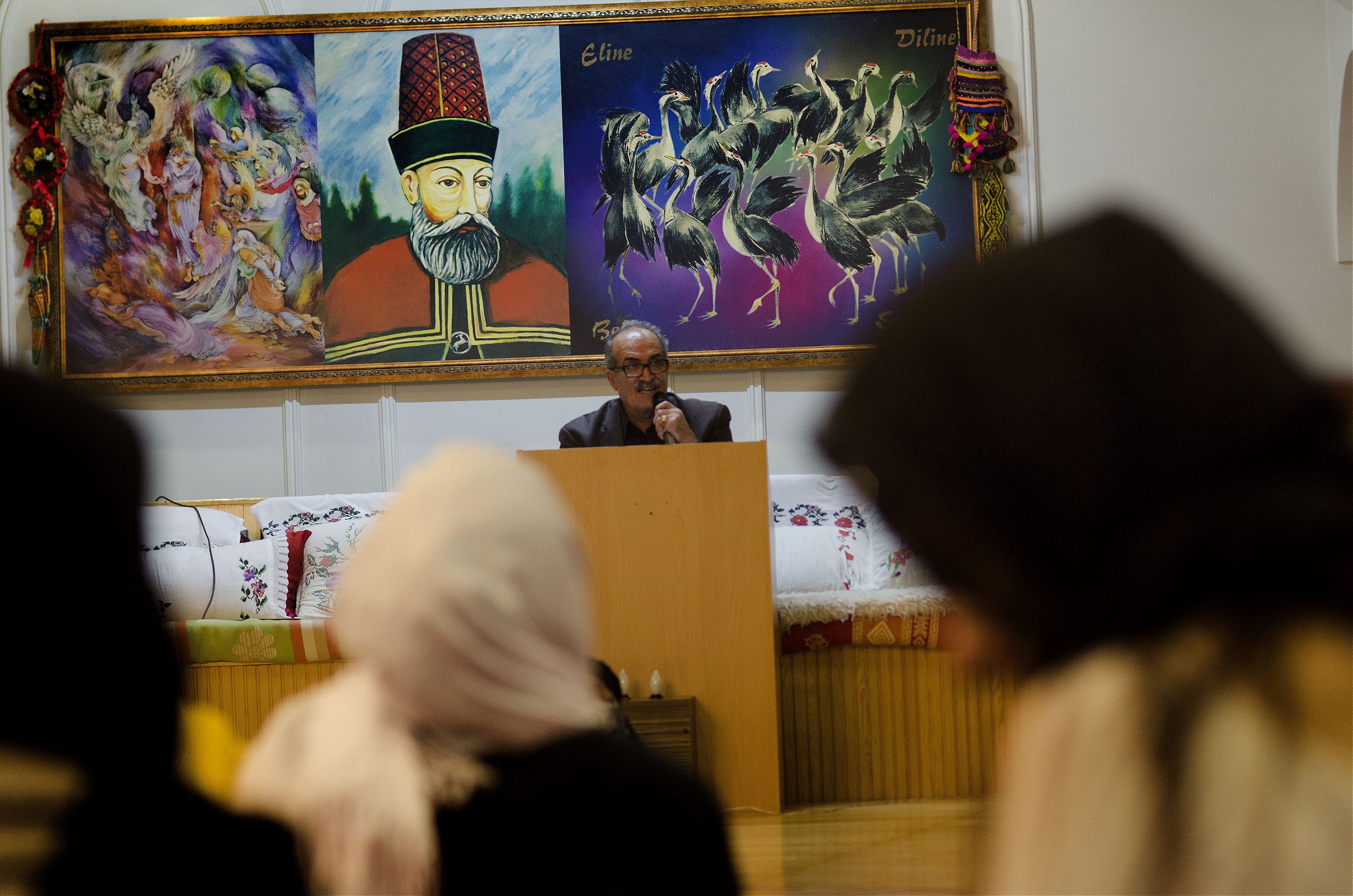
The dede is perched on a thick rug made of lamb’s wool—it is from this that Sufis get their name. “Suf” was the term for wool. Behind him are three portraits, forming another kind of trinity. There is one of peacocks, a bird much-admired by Imam Ali; another of Haci Bektas, the Alevis’ Anatolian forbear; and a third, the most arresting, of Mansur Hallaj, the Persian mystic who would enter trances, attempting to reach God himself, and utter “Ana al-Haq” or “I am the truth.” He was imprisoned by the Abbasids in Baghdad, subject to an 11-year trial for allegedly comparing himself to God, and ultimately executed in public.
The charge of heresy has long been leveled at the Alevis. During Ottoman times, this was the justification for much of their suffering at the hands of the sultans. The cruelest of them all, Selim I, or Selim the Grim, who earned his nickname in part because of his massacre of 20,000 Alevis in the 16th century. He is said to have proclaimed, “The killing of one Shia is equal to the heavenly reward of killing 70 Christians.”
When the fiercely secular Kemal Ataturk established the modern Turkish republic, some Alevis were cautiously optimistic. The Alevis lead mostly secular lives. The wearing of headscarves has been a perennial political flashpoint in Turkey, but the Alevis don’t wear traditional clothing outside the cemevis. Unlike most observant Muslims, they drink alcohol. A famous Alevi joke asks if a donkey is given the choice of water or raki, the heady Turkish spirit, which will he drink? “The water, of course, because he is an ass!”
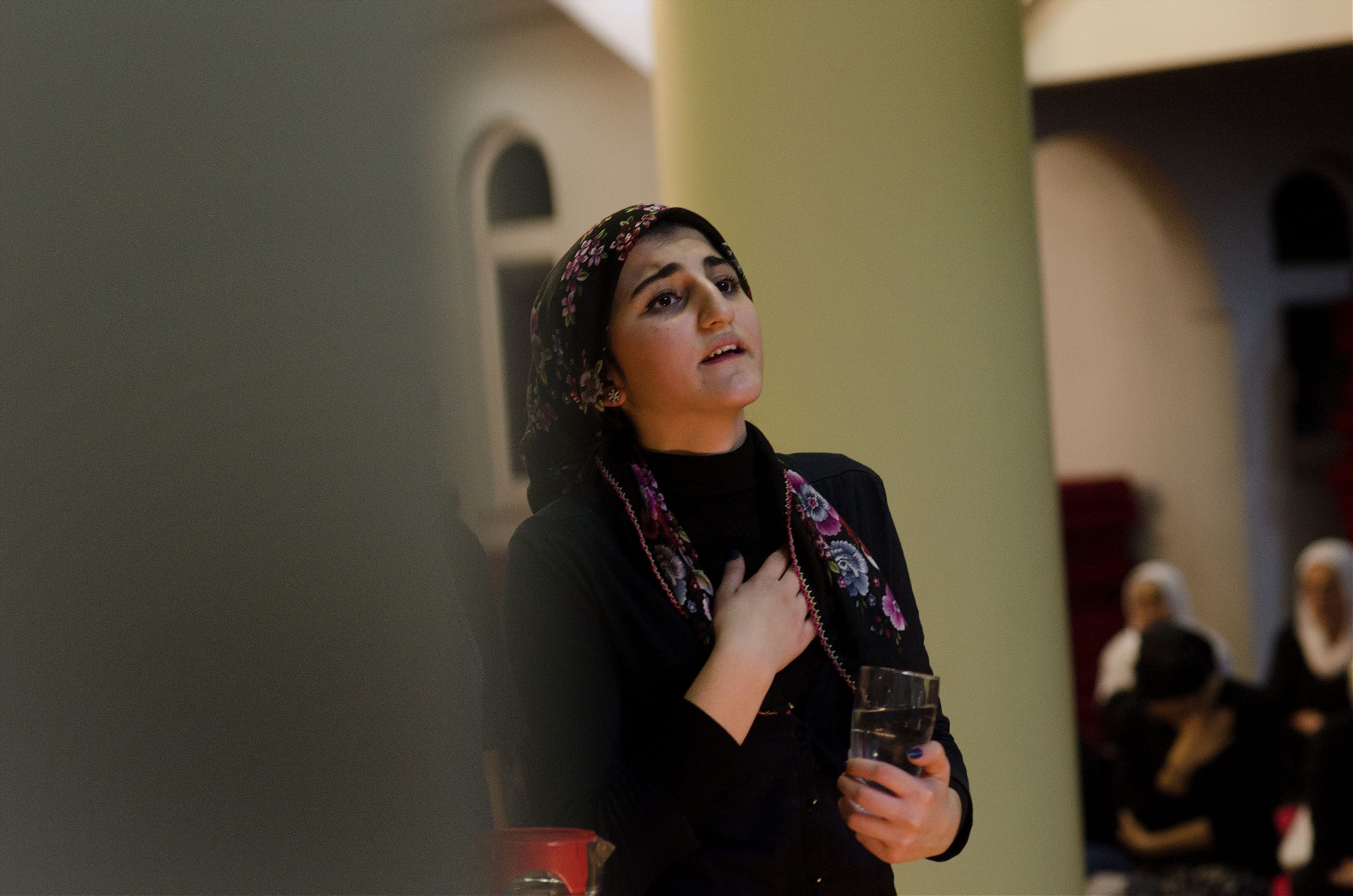
But under the early Kemalists, the marginalization of Alevis endured. The modern Turkish identity was based on being a Turkish speaker of a Sunni Muslim background. The dedes had their beards shaven, hence Gulsoy’s lonely moustache, and in 1938, the Alevi-led Dersim Rebellion protesting new laws aimed at resettlement saw many Alevis crushed by the state.
For the Alevis, recent decades have been punctuated by further killings. During the Cold War, when Turkey’s government was generally pro-American and anti-communist, many Alevis were associated with leftist groups. To the Turkish state, Alevism became almost synonymous with the Communist threat. There were massacres of Alevis by extremist groups in the towns and cities of Corum, Malatya, and Sivas. Budak, my guide, recalls growing up in Malatya. “In the village, we felt free,” she says, “but when I went to school, I realized that I was an Alevi. It was very difficult.”
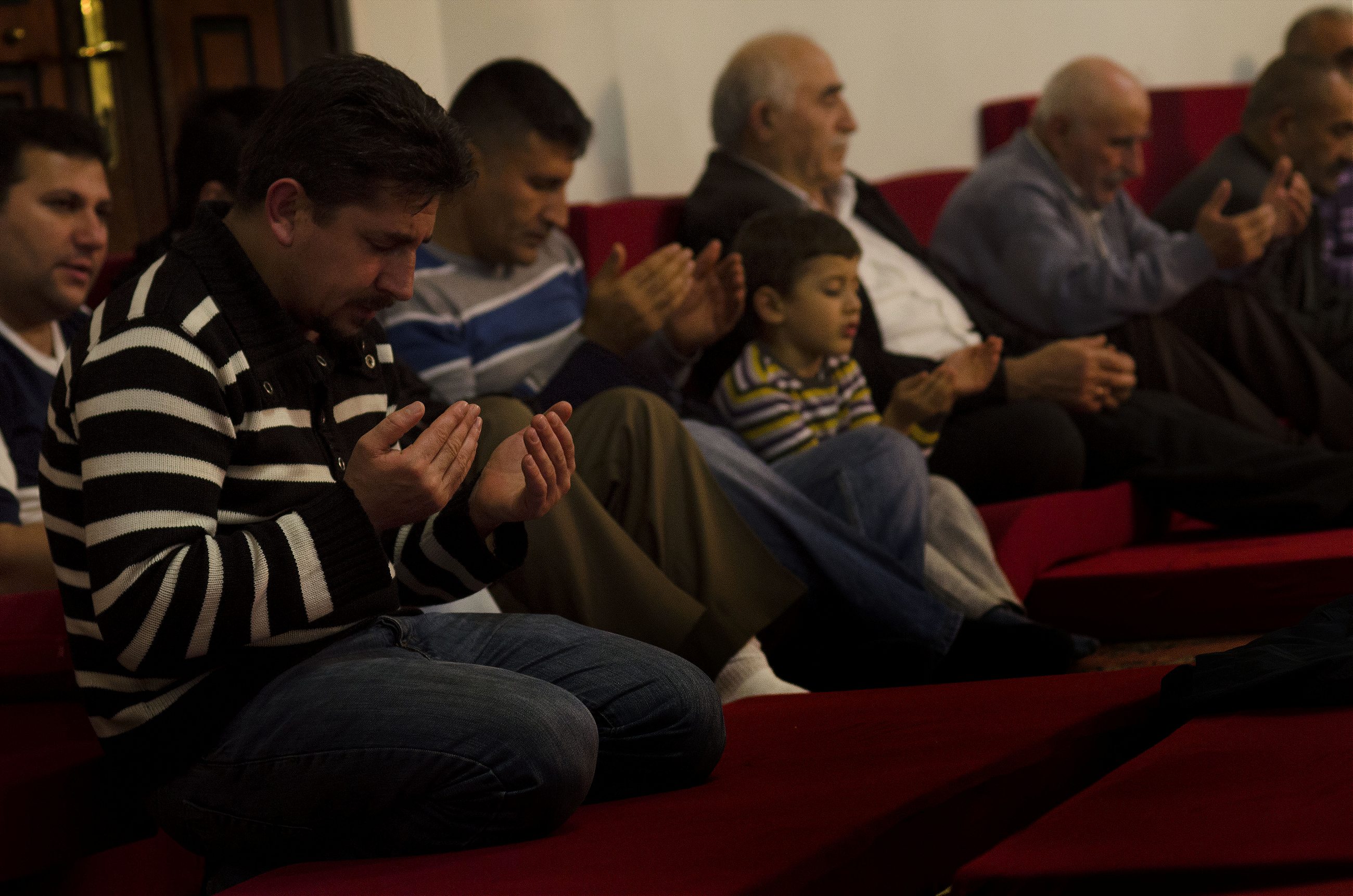
Her husband, a computer engineer, guitarist, and part-time basketball coach, is from Sivas, a city in central Turkey. The people there vividly recall another massacre, in 1993, when a mob of Salafis—hardline Sunnis—marched on an Alevi conference, and set the attending group of writers and intellectuals on fire. Among the dead was a famed balagma player.
Like many Alevis, Budak’s husband is a Kurd. He’s also an atheist. He doesn’t attend the prayer sessions, but helps out at the school. Budak and her husband respect one another’s beliefs. “He has a good heart and that’s enough for me,” she says with a smile, placing an affectionate palm on his shoulder.
Outside the cemevi, there are posters of more recent martyrs. When the anti-government protests in Istanbul’s Gezi Park broke out last year, seven people were killed. All of them were Alevi. “Because the Alevis were in front,” says Budak, who went to the protests with her family. The Alevis’ reverence for nature mingled with their left-wing politics to drive opposition to Erdogan’s plans to cut down the park and deepen his increasingly authoritarian rule.
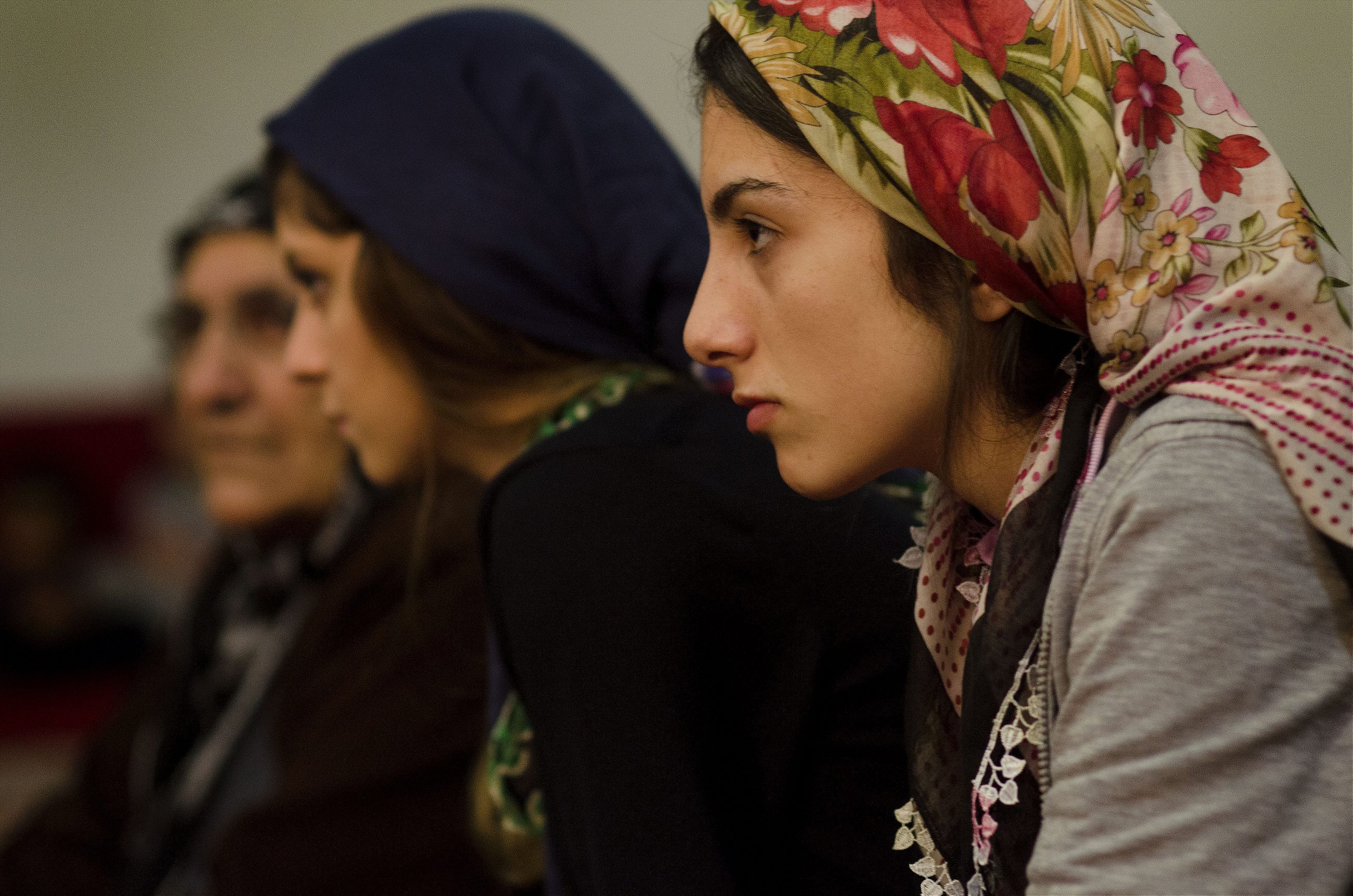
After decades of state-enforced secularism, the rise to power of Erdogan’s Islamist AKP party has brought religion back into the Turkish political mainstream. But not all religious groups enjoy equal favor. Some years ago, Erdogan’s government toyed with the idea of reaching out to the Alevis. The community balked, seeing it as a crude bid for their votes. The government has resisted their longstanding demand that the cemevis be recognized alongside mosques, churches, and synagogues as places of worship, meaning they have no access to government funds. And religious instruction in public schools, which is compulsory under the constitution, includes no mention of Alevi beliefs.
The war in Syria has heightened their anxiety. The Alevis are distinct but related to Syria’s Alawite minority, which includes most of that country’s ruling elite including President Bashar al-Assad. With the involvement of Sunni extremist groups including ISIS, the conflict has taken on a more explicitly sectarian tone. ISIS’s aggressive push toward the Turkish border, carries particular fears. Like the Yazidis, another religious minority who had to flee slaughter at the hands of the Islamic State, the Alevis worry they may also be targeted if ISIS expands into Turkey.
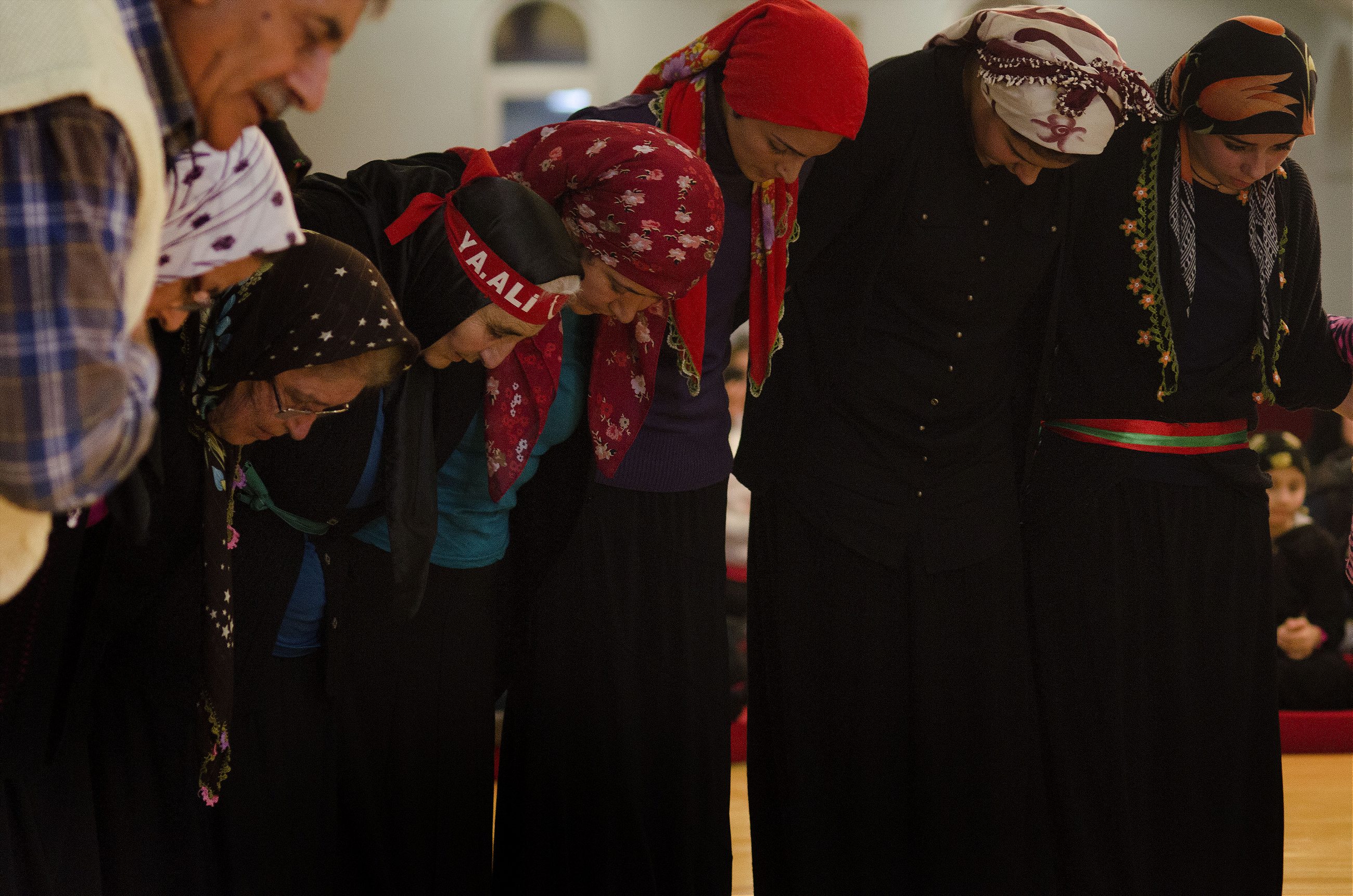
The gathering at the cemevi reaches its climax with the performance of the semah, a ritual performance set to music. Members of the faithful rise one by one to form an arc. They hold each other’s hands and then whirl against the backdrop of quickening music, with slow, graceful gestures. One of them involves raising a cupped hand, symbolic of shining a mirror at one’s heart, while the other hand is placed across the chest. With brisk two-steps, they alternate the hands as their feet shuffle forward.
“This isn’t a dance,” Budak tells me. “It is a show of our pride.” Erdogan and some of his supporters have mocked the Alevi ritual as a frivolous dance, and the cemevis as sites of decadence. The whirling is traced back by some Alevis to pre-Islamic sixth century Central Asia. A Chinese poet of the time is said to have recorded the practice in verse: Like shivering leaves falling off in the autumn, they whirled in the winter gale/Like a light fabric made of the rainbow, they whirled as a storm in the skies.
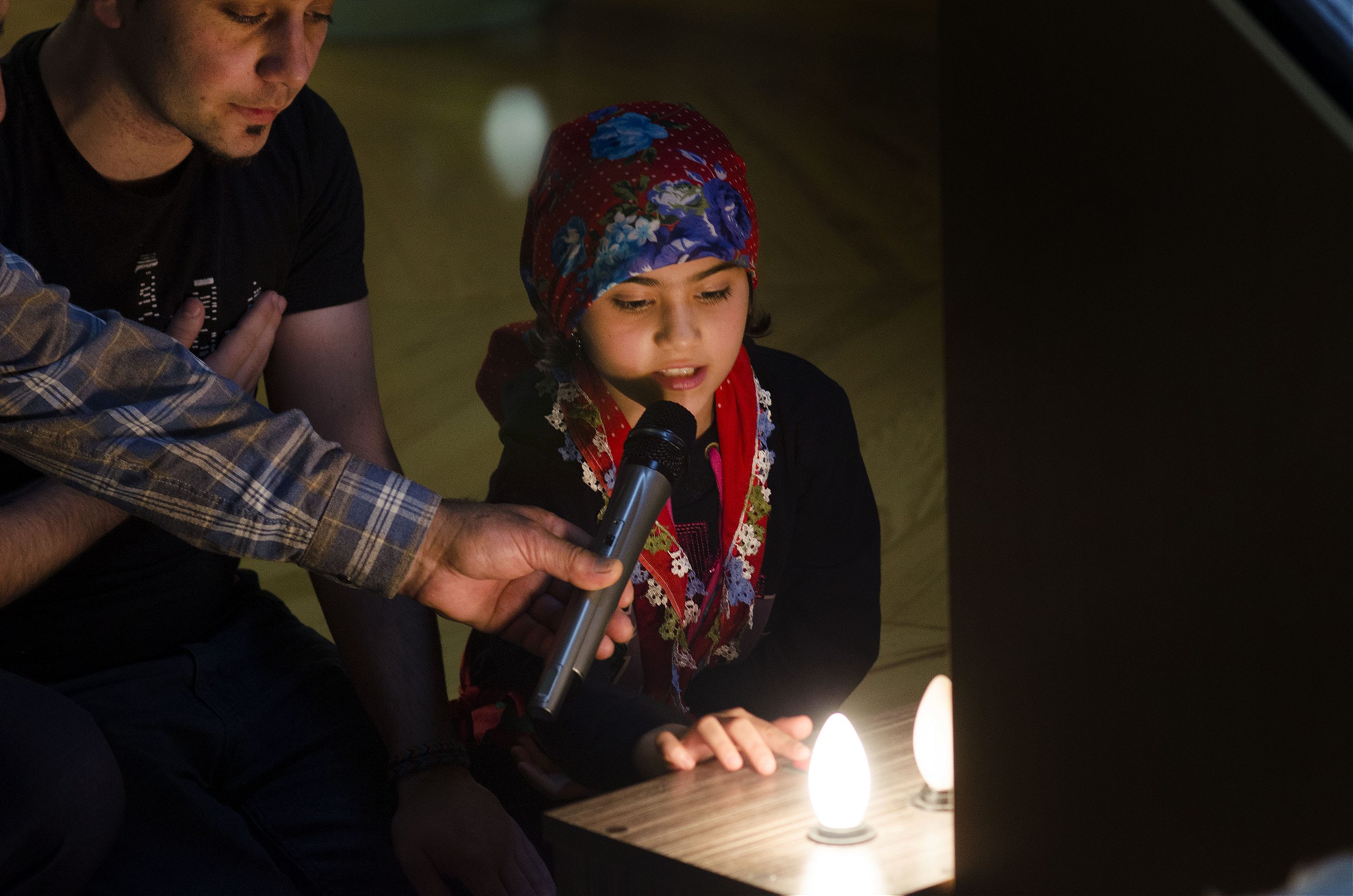
Once the semah ends, the music slows to a low note. The tale of Husayn, the son of Ali and the most revered Shia saint, is mournfully sung. In 680, Husayn and his group of followers were massacred by Yazid, the tyrannical caliph at the time. The tragedy took place in Kerbala, now in Iraq, and is marked each year in the Muslim month of Muharram, which is currently underway. The congregation begins to weep as the story is told. Some of them lightly pat their chests in a sign of mourning. Others rhythmically stroke their thighs before patting their knees. It’s a light form of self-flagellation.
For the Alevis, Kerbala is not merely a story of the founding of their faith. In the world, as sectarianism spreads, it is relived as a parable for the present—the story of a vulnerable minority slaughtered for its beliefs. The martyrs of Sivas and Gezi were met with a comparable fate. And even the oppressors are likened to each other. “ISIS,” says the dede, at the end of the gathering, “is today’s Yazid.”
